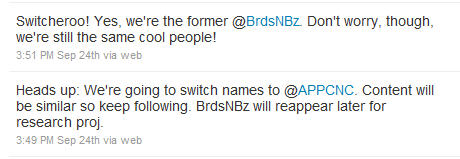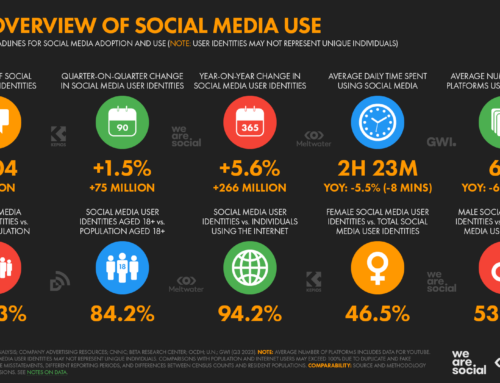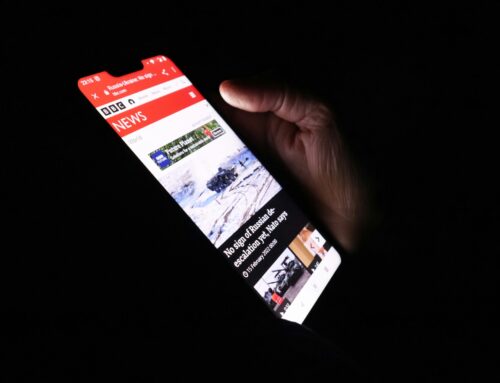I met Elizabeth Hundley Finley, the development and communications manager for the Adolescent Pregnancy Prevention Campaign of North Carolina, a couple of weeks ago at an AFP workshop I presented. She told me the story of how she recently changed her Twitter handle and her approach to how she used Twitter and I was so impressed with her deft maneuvering that I asked Elizabeth to share her story with you.

 Guest Post by Elizabeth Hundley Finley
Guest Post by Elizabeth Hundley Finley
I launched the @BrdsNBz Twitter account this summer as a way to advertise the BrdsNBz Text Message Warm Line. BrdsNBz is Adolescent Pregnancy Prevention Campaign of North Carolina’s (APPCNC) acclaimed sexual health text line for North Carolina teenagers, where we provide safe and accurate answers to teens’ sexual health questions via text message. Unfortunately, traditional advertising for the service has been prohibitively expensive.
My goal for @BrdsNBz was to use Twitter as a cost-effective way to direct new potential users to the service.
I set a schedule for myself, issuing twice-a-week tweets. Most of my tweets were prompts to use the text service or examples of frequently given answers.
I wasn’t meeting my goal: After a month, I only had 20 followers and all of them were adult professionals in our current networks. And, we weren’t getting more texts to the BrdsNBz service.
I learned very quickly:
- Twitter is not the way to reach my intended audience. While Twitter use is growing among teens, it’s still a social medium dominated by adults.
- Twitter is conversational: Engaging your network with retweets and @mentions are great ways to build a following. Self-promotional tweets get a cool reception.
- I was missing an important opportunity to serve our true constituency on Twitter – adults working to implement effective sexuality education. They were following me, but I wasn’t engaging them.
Luckily, social media gives us the opportunity to learn from each other, to quickly analyze our successes and shortcomings, and to make course corrections as needed.
I revisited my Twitter goals and realigned them with my overall communications plan. My new goals are very simple:
- I want more people to recognize us as a leader in the pregnancy prevention field; and
- I want people to understand what constitutes effective sex ed and positive adolescent sexual health.
I immediately changed my tweeting style. I retweeted our followers’ tweets. I shared interesting stories about sexual health and sex education. I used @mentions to send shout-outs to our youth advocates.
I also started to explore a name change. I wanted all my work to boost APPCNC’s brand. After floating the idea by a particularly media-savvy member of our youth group (follow him @teenadvocatedan), I decided to switch our Twitter moniker from @BrdsNBz to @APPCNC.
Twitter makes changing your name simple – just edit your Username under the “Account” tab in Settings. Your followers, retweets, @mentions and direct messages stay intact when you change your name.
I tweeted about the name change immediately before doing it: “Heads up: We’re going to switch names to @APPCNC. Content will be similar so keep following.”
Minutes later, I tweeted under the new name: “Switcheroo! Yes, we’re the former @BrdsNBz. Don’t worry, though, we’re still the same cool people!”
Many of our followers praised the move. They continue to follow us, @mention us, and retweet our content. Even better, I have increased our ability to engage our day-to-day constituents online.
We have gained 2-3 followers each day since making the change.
If your Twitter moniker isn’t supporting your brand or your communications strategy, change it! Include your followers in the change process by alerting them to the change before and after you do it. Then engage your constituents in a genuine online conversation about your organization’s area of expertise.







